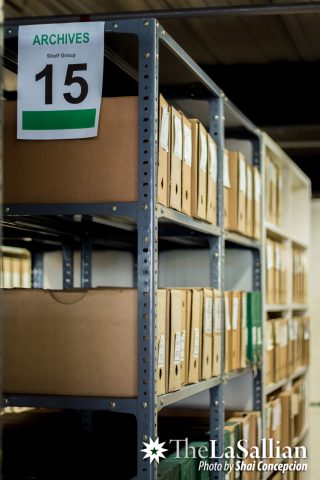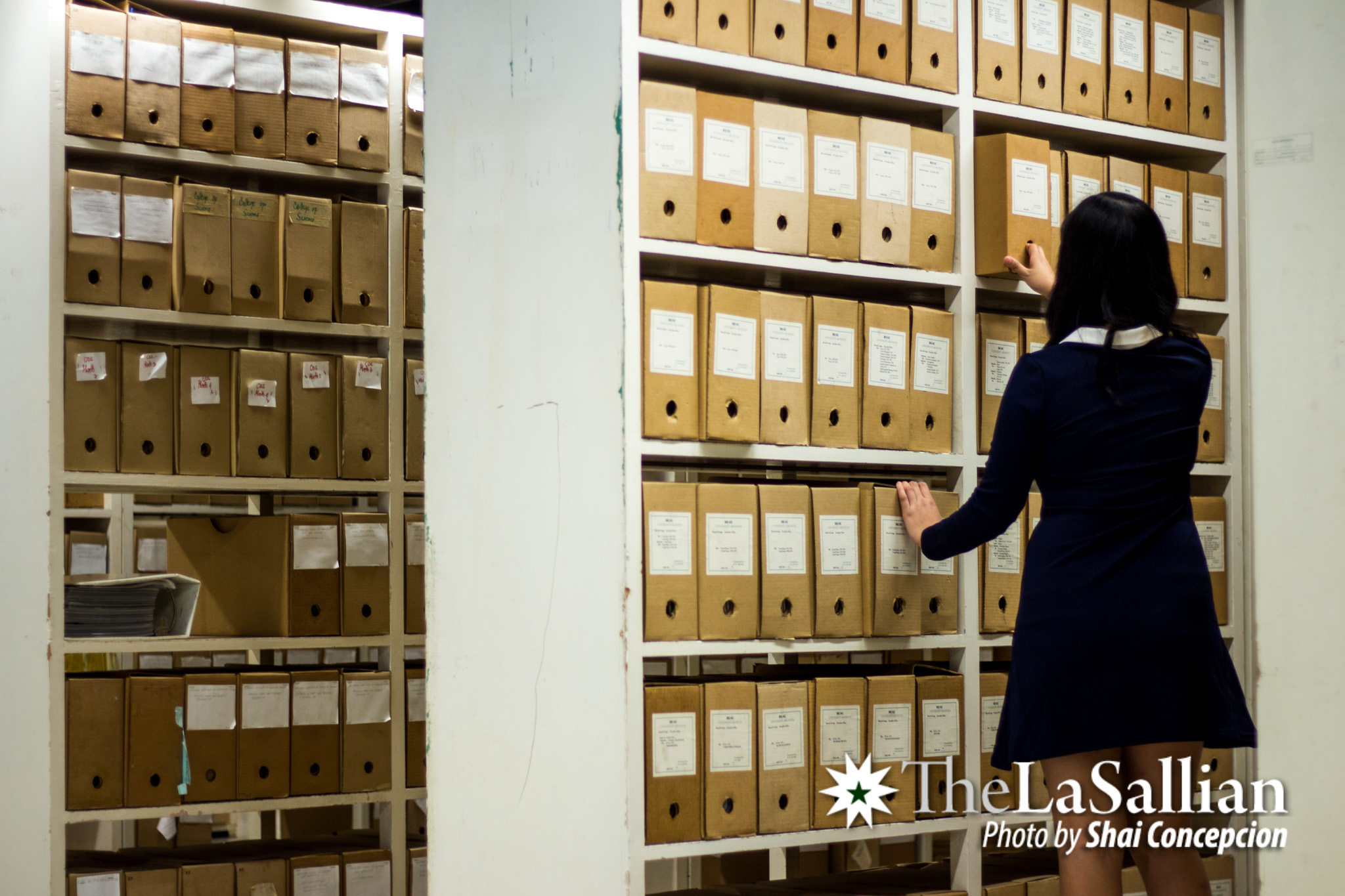Situated on the 12th floor of Henry Sy Sr. Hall is the DLSU Archives. Housing the University’s important documents and anecdotes, it is arguably one of the least visited and understood areas within the DLSU Library.
To shed light on this often overlooked section, The LaSallian interviews Roselle Maestro, University Archivist, in an attempt to dig into the background and processes under her office, as well as disperse any misconceptions students may have about it.
‘Official memory of the University’
Maestro considers the DLSU Archives as the “official memory of the University”, being host to DLSU’s historical records. Library patrons would be familiar with some of its contents; theses and dissertations often used as reference materials comprise some of these.
But the DLSU Archives holds more than just countless reams of research. Administrative records of the University, as well as past copies of University publications, too, have found a home in its halls. A varied collection of DLSU memorabilia are also kept on display. As Maestro puts it, their collection covers “anything that has to do with the history and development of the University.”
The reason they archive? To preserve them for posterity, Maestro explains, “so that future Lasallians and the entire Filipino nation can make use of these materials.” The goal is to have these materials in one place, but Maestro reveals that they also plan on having some of them digitized for better preservation.

The archiving process
Archiving is no easy task. Beyond simply storing physical records, Maestro discloses that they follow a standard process to ensure that what is stored is worth archiving.
The office first appraises the material to check for its “archival value”. “It should be [of] permanent value, and it should be an inactive record, so it shouldn’t be something na ginagamit pa rin madalas,” Maestro explains.
(It should be [of] permanent value, and it should be an inactive record, so it shouldn’t be something still being used frequently.)
The office also checks the physical condition of the record—it may be host to unwanted pests, for instance—and apply necessary preservation methods, if needed. If they find it is unsalvageable or beyond repair, they then choose to not archive the material.
Once they complete the appraisal process, the material is then added to their system of records, which organizes where each and every item will be stored in the archive. “If the record belongs to a certain department, all of their records will be in one shelf or in a series of shelves,” Maestro elaborates. Descriptions are also added to the materials to make it easier to locate them.
After completing this, the items are ready to be accessed by library patrons, with the exception of sensitive records which Maestro clarifies are restricted. These often take the form of confidential personal information such as counselling records and financial details, which require additional approval to be accessed.
Clarifying misconceptions
People often presume that when a place is considered an archive—especially within an academic institution setting—it holds anything and everything that is considered old. Maestro says that this is a common misconception.
Donors often turn in old materials to the office by bulk, assuming that they would all be simply kept in storage. Most of these items end up not getting past the appraisal process. The DLSU Archives has since organized record management trainings for department secretaries so that they could better curate their records before turning it over to the archives.
But not all of these are of little value. Maestro notes that office manuals, history of past activities, and minutes of administrative meetings sent by offices are important in putting together a department’s history, as these shed light on what transpired in the past and how it reflects in the present.
Students, Maestro believes, also have limited knowledge of their work, with some knowing the archives simply as the area with the restricted sign. This has also manifested in how patrons utilize their content, as most students only visit to access past theses for research, even though other records are readily available to them.

Maximizing the archives
To resolve these issues, Maestro expresses her desire to make the utilization of archives easier and more convenient, especially for students. Some of these are already available on the Online Public Access Catalog, particularly theses, dissertations, and University publications. They have recently endeavored to have a database for the Lasalliana collection as well.
A guide for accessing the archives is also underway, Maestro shares. “As of now, you will [figure out] first what you need and what format, and then doon ka mag-search. But we want to have a comprehensive guide,” she adds.
(As of now, you will [figure out] first what you need and what format, and only then will you start searching. But we want to have a comprehensive guide.)
Exhibits are also in the pipeline, with the aim to better highlight the importance of the archives. Last year, the office celebrated its 50th anniversary and commemorated it by highlighting the importance of having such a repository. After that, it also opened the Lasalliana learning space, which showcased some of St. John Baptist de La Salle’s works. This year, they plan on holding similar events.
